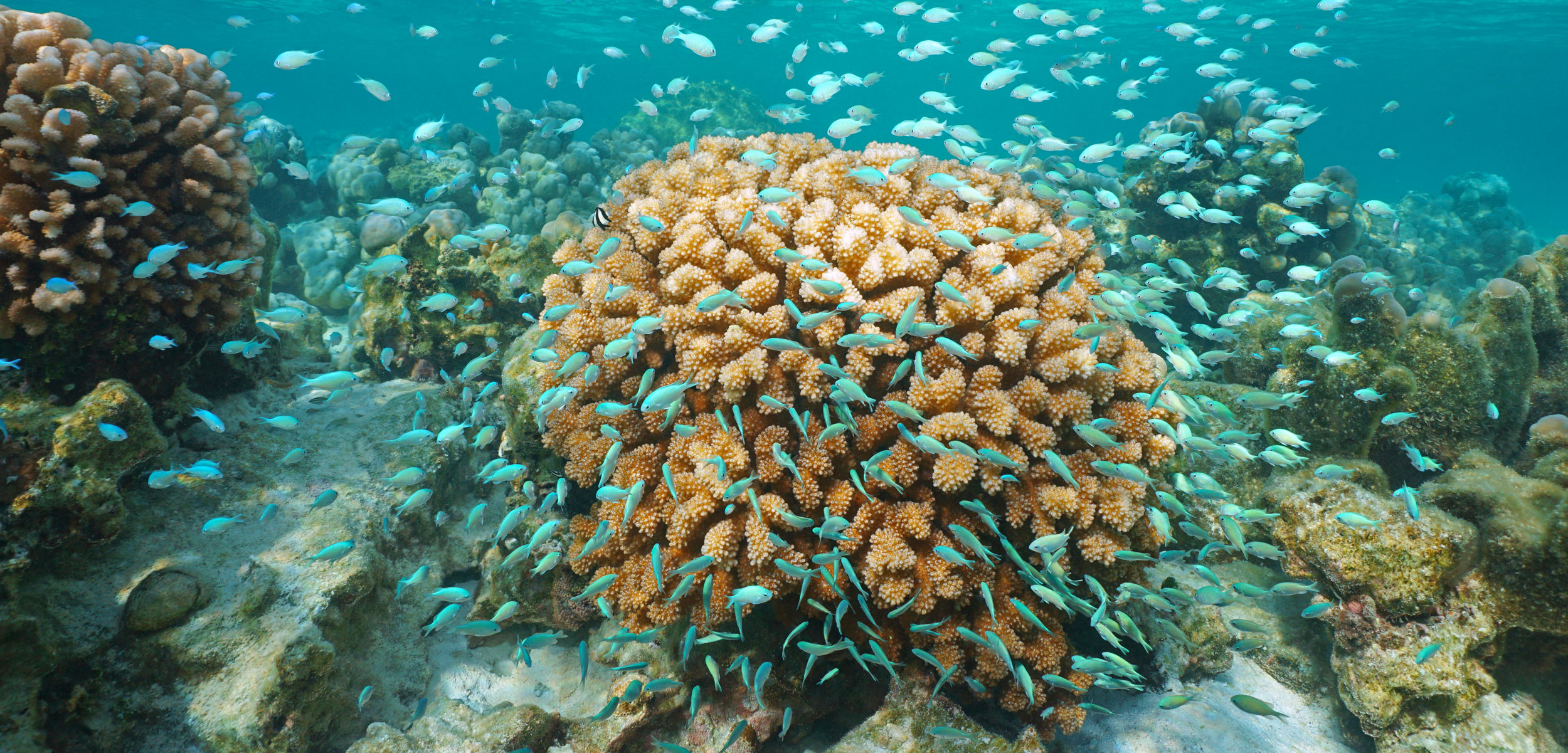Giving Coral Reefs a Second Chance with Probiotics
When faced with high heat and disease, coral treated with microbial supplements fared better.
Article body copy
Corals, like humans, coexist with a host of microbes that help keep them healthy. As climate change continues to heat the ocean, however, coral reefs risk losing their temperature-sensitive microbial defenders, leaving them stressed and more susceptible to disease. But a potential cure using microbial supplements—probiotics—could provide corals with a second chance.
“It’s just like us. If you’re healthier, you’re more resistant to disease,” says Raquel Peixoto, a microbiologist at the Federal University of Rio de Janeiro, Brazil, who led the new study.
Peixoto has previously experimented with using microbial engineering to create more sustainable agriculture practices. She thought such an approach could be extended to coral reefs. The idea was simple: create marine equivalents of the probiotics some people take to improve their digestive health.
Peixoto and her collaborators began by taking samples of microorganisms from cauliflower coral, a species of stony coral. In the lab, they isolated a handful of bacteria thought to be beneficial to the coral’s health. Later, they injected the microbes back into the coral to supplement its natural numbers—essentially like feeding probiotic yogurt to the reef.
Cauliflower coral were then placed in small aquariums and subjected to rising water temperatures of 4 °C—equivalent to what the ocean might experience by 2100. Some aquariums were also injected with Vibrio coralliilyticus, a common bacteria that infects cauliflower coral. A couple of weeks after the microbial injections, the coral that had received the probiotics were in better health than those that had not.
While testing of the probiotic supplements is currently confined to the lab, Peixoto envisions the treatment being administered on wild reefs. The probiotics could be sprayed from a plane, similar to how pesticides are spread over fields, or dropped like little bacterial bombs to target areas more specifically. Peixoto acknowledges the risk of trying to deliberately manipulate microbial ecosystems in the oceans, but believes the probiotics could be a viable long-term solution to coral reefs’ declining health.
“We’ve been trying to minimize the risk by using native bacteria,” Peixoto says. “As these [bacteria] are already there, it’s very unlikely that they can cause any harm.”
Peixoto is currently testing ways to mitigate any possible risks, as well as how to scale the method to work efficiently in the ocean. The project recently won the People’s Choice Award in the Great Barrier Reef Foundation’s Out of the Blue Box Reef Innovation Challenge. The challenge’s US $110,000 grant will help fund continued research. Planning is also underway to test the probiotics in the world’s largest artificial ocean, Biosphere 2, in Oracle, Arizona.
Apart from knowing if the probiotic method can be scaled up efficiently enough to have a sizable effect on reef health, there are also concerns that it might impede the coral’s natural ability to evolve and adapt to climate change. For example, a coral’s original microbe population often can’t withstand warmer waters, but a strain may evolve that is temperature-tolerant. If scientists reintroduce the original strain, the evolved strain now has to compete for space, reducing its ability to help the coral.
“You could be harming your adaptation potential if you keep reintroducing non-resistant bacteria,” says Becky Twohey, associate program director at the Coral Reef Alliance, who was not involved with the study.
This natural evolution works in cases where at least some small percentage of the coral survives. However, in areas that might have no survivors, Twohey notes that a probiotic strategy could be used to maintain a population. Reintroducing more evolved, hardy strains of bacteria, which could help the coral artificially adapt, might be possible as well.
Coral reefs are facing more than just pathogens and warming water: pollution, nutrient runoff, and physical destruction from tourism and fishing practices are also causing problems. Whether it is removing local stressors, like water pollution, to give corals the chance to adapt, or administering coral probiotics to aid their recovery, it’s clear that a multipronged approach is needed to give corals the best chance in a warming world, Peixoto says.
“It’s very likely that the reefs we have that survive tomorrow are going to be very different than the reefs we have today,” Twohey says.

